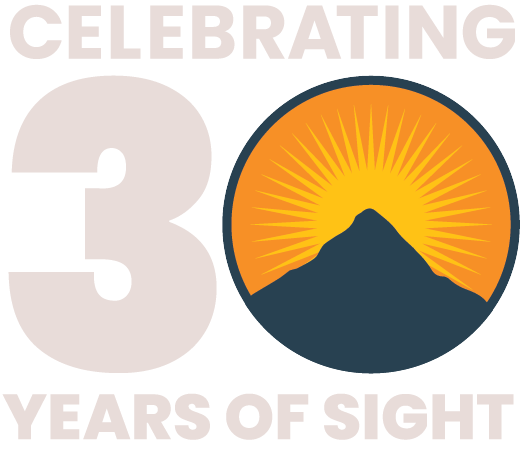Academic Partnerships: Strength Through Expertise and Experience
Since our inception, we have worked closely with top academic institutions in ophthalmology. These partnerships are part of what makes our organization different. They also are opening doors, sparking conversations and expanding training opportunities.
Under the leadership of Dr. Jeffrey Goldberg, Professor and Chair of Ophthalmology at the Byers Eye Institute at Stanford University, Stanford Ophthalmology has grown from a full-time faculty of 23 to 60. Today, they host over 100 clinical trials, and a broad-based research program that has jumped their department ranking from #37 to #4 for National Institutes of Health (NIH) funded research and educational grants. “We’re bringing impact to all fronts of clinical care, research and education,” he says, “and continuing this focus locally in our communities and around the world.”
“We really amplified our global ophthalmology programming in recruiting Geoff,” explains Goldberg. “Geoff’s explicit goal in coming to Stanford was to leverage the relationship with Stanford and our many strengths and resources to amplify programming for Cure Blindness Project and our mutual partners around the world.”
Stanford Global Ophthalmology Fellowship
Together the Byers Eye Institute at Stanford with Cure Blindness Project established a one-year post-graduate clinical training subspecialty in global ophthalmology. Selected participants spend two-thirds of the year working in Asia and Africa, alongside department faculty. Dr. Geoff Tabin, co-founder of Cure Blindness Project, serves as the program’s director, as well as the Fairweather Foundation Professor.

The fellowship exposes and encourages participants to pursue uncharted paths and establish new collaborations for their own career of unique impact. Throughout the year, fellows deepen their expertise in global eye care ecosystems, social determinants of health, capacity building and surgical and clinical skills exchange. They also solidify skills in surgical procedures more common in low resource countries, such as sutureless extracapsular cataract surgery (MSICS) and trachoma surgery. Past fellows have gone on to become academic faculty themselves and expand and strengthen their respective university’s global ophthalmology departments including Dr. Lloyd Williams (Duke University), Dr. Kanwal Matharu (University of Iowa) and Dr. Jeff Pettey (University of Utah).
The Global Ophthalmology Fellowship is certified through the Association of University Professors of Ophthalmology. There is currently one global fellow per year but Goldberg and Tabin have discussed adding another in the future.
Partnership Building
Cure Blindness Project’s established relationship with Stanford creates opportunities to establish partnerships in countries that need eye care.
“Stanford is recognized as a top global institution,” says Tabin. “Stanford faculty are leaders in every area of ophthalmology and ophthalmic research. They are lending this expertise to build local capacity through teaching and lecturing, elevating the resident’s learning experience.”
These conversations have led to Memorandum of Understandings (MOUs) and detailed plans to address the backlog of cataract and other blindness in southeast Asia and sub-Saharan Africa.
Stanford’s School of Medicine is also engaged, with an active Center for Innovation and Global Health. The Center covers costs for faculty and staff to go abroad to teach (and learn). These trainings transfer surgical and research skills to in-country providers to strengthen existing eye care systems with the eventual goal of sustainability.
Cross-Department Collaboration
Research on epidemiology of eye disease, efficacy of improving care delivery, and impact on individuals, families, and the broader economies have also been a focal point of the Stanford-Cure Blindness Project alliance. “A lot of the drivers in trying to figure out how to measure the economic impact of reversing blindness have been driven by our relationships and collaborations with the Graduate School of Business and the School of Medicine,” explains Goldberg. Future clinical pilots in low-resource areas could explore what treatment methods to try that could be implemented by a technician, eliminating the need for an over-scheduled doctor.

Dr. Jeffrey Goldberg
For example, with philanthropic and grant funding, Tabin and Goldberg and their collaborators at Stanford have completed a series of papers on the delivery cost of cataract surgery abroad versus in the US, and the economic costs and impact of blindness. This research has led to answers to previously unexamined questions of long-term effect of blindness in low- and middle-income countries.
In other work, the Byers Eye Institute has collaborated with Cure Blindness Project to deploy new technologies invented for remote diagnosis of eye diseases in Asia and now in Africa, using rigorous research to measure their impact. Cross-collaboration with Stanford’s School of Engineering faculty will identify the best ways to identify and invent the next generation of diagnostics and therapeutic devices, as well as better ways to organize, track and trace data.
Looking to the Future
Goldberg envisions Stanford’s faculty in ophthalmology, as well as in engineering and business, as an invaluable resource as Cure Blindness Project builds to scale and continues to grow to help more people in more countries. Utilizing their expertise will allow for greater, long-term success.
“Our mutual support of each other’s mission multiplies the end results,” says Tabin.
Stanford defines community as the entire world; Stanford Ophthalmology’s mission is to help as many people in our community as possible. As is ours. With the strength of Stanford lifting us, Cure Blindness Project is excited about what our combined future looks like.





